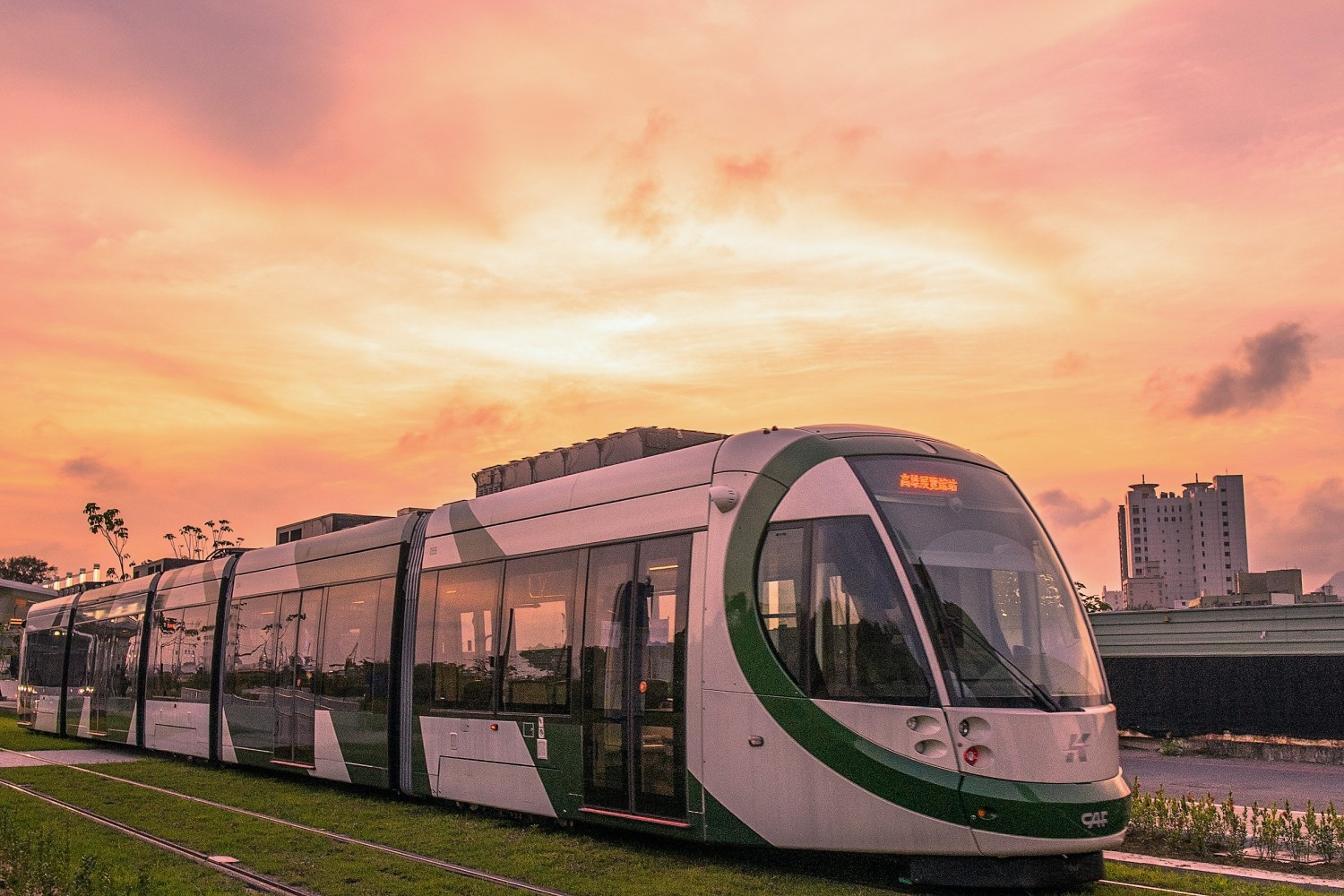
Mayor, rest of council confused about LRT project; Brown can’t say why he wants $1.7B tunnel option
There are serious problems with Brampton council’s controversial LRT plans: despite Mayor Patrick Brown’s claim that an application can be made to secure funding for the tunnel option he wants (which could cost $1.7 billion), this is not correct; he says because of privacy concerns he can’t even disclose why he is demanding such an expensive alternative; and councillors who voted for the Main Street route, after their predecessors removed it, did so without consideration of the numerous problems the corridor presents.
It means Brampton’s long-running LRT saga will continue, with the news that an environmental assessment (EA) has not been completed for the city’s official route preference along Main Street. Despite the work being years from completion, Brown says the city is ready to apply for funding. But that can’t be done without an EA, and a new document shows that won’t happen for years.
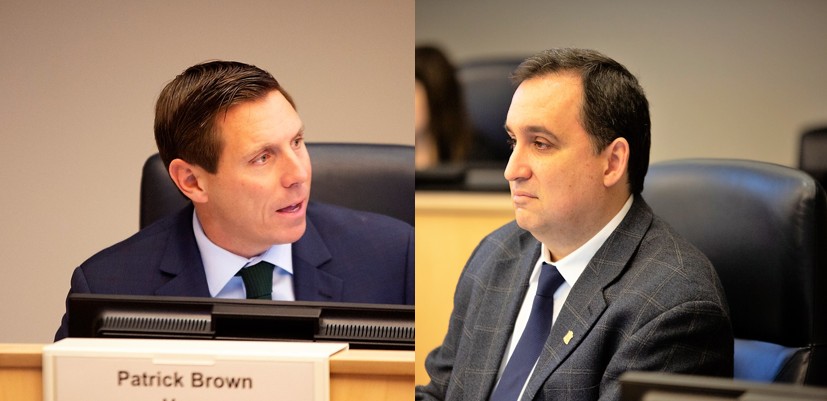
Mayor Patrick Brown and Councillor Paul Vicente have disagreed on the LRT tunnel option
The document recently released by the city shows that planning for a light rail route along Main Street, which Brown would like to see tunnelled, has barely started.
Simply entitled “Update: Brampton LRT Extension Study”, the document reveals that the project’s environmental assessment (EA) won’t be completed until summer of 2021, with the 2019 and 2020 stages of the work tasked to develop a long list and then a short list of “LRT routes”. Brown’s preferred tunnelling option, which he says would be the easiest to achieve, has had no engineering study completed at all.
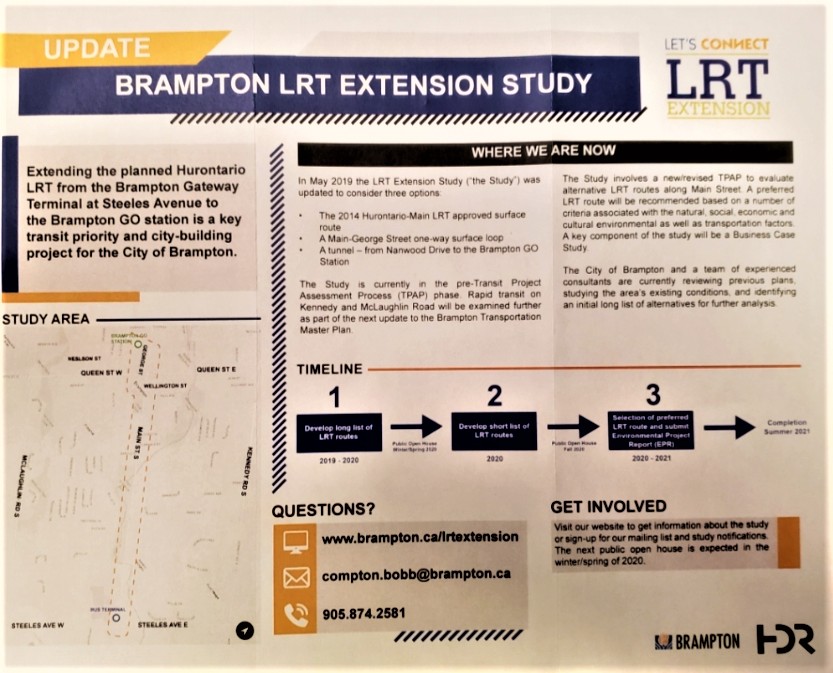
Brown told The Pointer he had “briefed the federal and provincial governments” on plans for the LRT extension and that council would be “ready to apply” when the relevant funding streams open up. One such window for federal funding just closed weeks ago, with no LRT application from Brampton.
“We’re ready to apply tomorrow,” he stated.
But city staff confirmed to The Pointer that the province requires a completed EA before a funding application can be submitted and Ottawa’s funding criteria states the same in its requirements for funding.
The competing three options which the LRT Extension Study is considering are the originally proposed 2014 surface route along Main Street, a Main-George Street one-way loop at surface level or a tunnel from Nanwood Drive to the downtown Brampton GO station – Brown’s preferred option.
Brown has already had a run-in with Councillor Paul Vicente, after the mayor accused him of uttering misleading information to the public about the benefits of a surface option, which Vicente unsuccessfully tried to ram through council, before Brown stopped him in April.
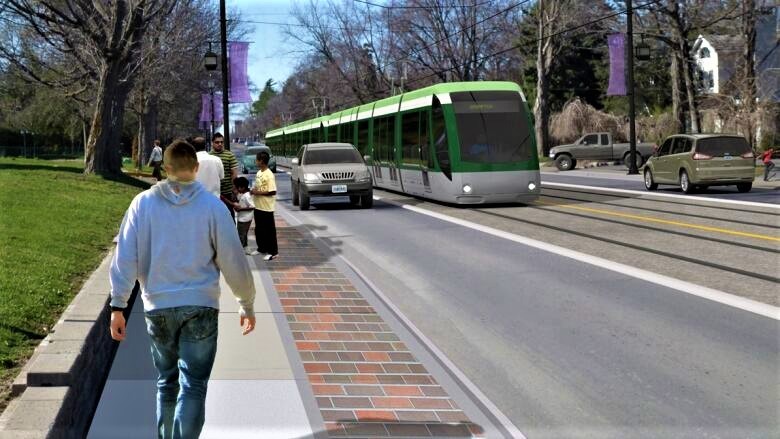
A rendering of the Main Street LRT just south of Queen
The City of Brampton confirmed to The Pointer that a team of consultants from environmental engineering firm HDR had been retained (in July) to update the Hurontario LRT EA with the three route variations in consideration. A city spokesperson said that the environmental assessment would not be completed until summer 2021.
Asked by The Pointer why the tunnelled route along Main Street – staff has said it could cost as much as $1.7 billion compared to $450 million for a surface route – was his preference, Brown was reluctant to go into detail, referring to Main Street’s floodplain designation and details which were discussed behind closed doors during in-camera meetings.
“So we can’t disclose everything we discussed in-camera, but obviously there are some complications with the downtown because of channels under the ground and there is work being done to the city to protect the architectural integrity, the safety and security of the downtown,” Brown said. “That adds a layer of complications, that’s why we undertook an EA just now for this tunelled thing. The EA and the work being done on the downtown, protecting the integrity of downtown, that’s going to take quite some time.”
Brown added that this consideration was the reason for Brampton’s Downtown Reimagined project being delayed, saying it was the reason there would be “some challenges” for a surface level LRT along Main Street. Despite the issues around planning and the lack of an EA, which is required before funding applications can be sent in, Brown seems convinced that the city is ready to get funding now and that there are no glaring obstacles to a tunnel.
“No one on [the] staff who has been doing the due diligence has ever suggested that [the tunnelled route] is not possible,” he said. “We have a prediction of what the cost will be, but the due diligence we’re doing now will give us some more certainty to the cost and potential challenges, but there’s been no concern; not even a whiff of a suggestion that it wouldn’t be possible. In fact, the opposite. We believe that if there’s a funding partner, this can be achieved faster than anticipated.”
Brown did not explain why he thinks it could be achieved “faster than anticipated”.
The most likely source of funding for an LRT extension would be the federal Investing In Canada Plan, a $188 billion infrastructure fund primarily for municipalities. The terms of the public transit funding streams throw a spanner in the works of Brown’s notion.
Under the title “ineligible projects”, the rules of the fund say that “all capital costs” do not qualify “until Canada has confirmed in writing that environmental assessment and Aboriginal consultations… have been met and continue to be met.” Making reference to the Canadaian Environmental Assessment Act (2012), the funding page goes on to reiterate that the feds will not pay interest or “any capital costs” for a project until “requirements under section 11 (Environmental Assessment) and section 12 (Aboriginal Consultation), if applicable, are, in Canada’s opinion, satisfied to the extent possible at the date the claim is submitted.”
The condition that an EA be completed “to the extent possible” could provide some wiggle-room for a project near the very end of the EA process, but would not apply to an assessment which is nearly two years from completion. And with all the severe concerns surrounding the route, including the flow of Etobicoke Creek, the downtown floodplain designation and the underground water channels, on top of other environmental and geological considerations, it’s highly unlikely that any funding will be secured until all of these issues are clearly understood with the needed approvals.
In terms of the province, Metrolinx says that “all large-scale projects that have potential impact on the environment” must complete an EA. It goes on to add that projects with a more predictable impact on the environment can go through a more streamlined approach (Transit Project Assessment Process [TPAP]) which shortens the timeline to six months for commencement, review and approval.
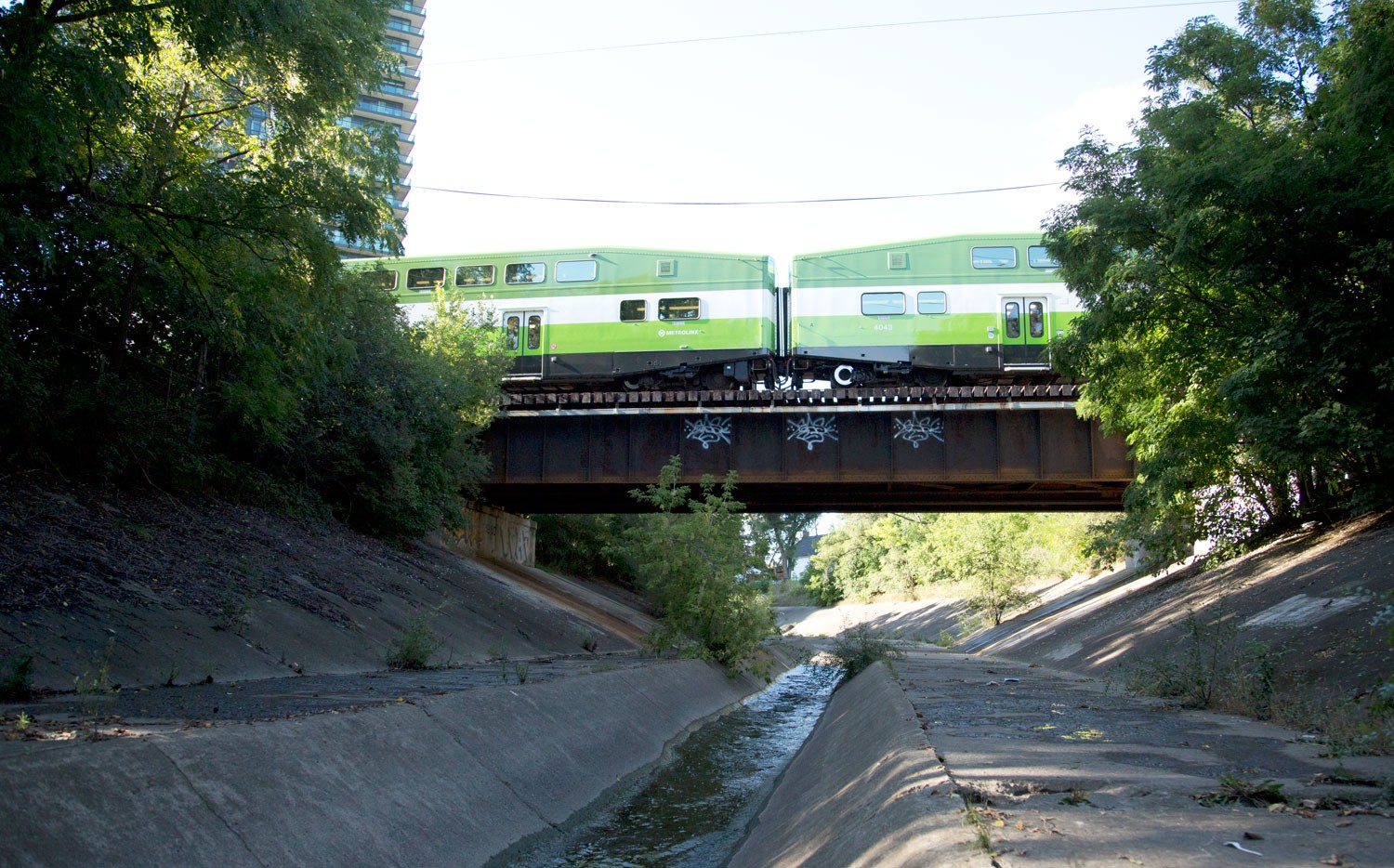
A GO Train runs above the downtown Brampton Etobicoke Creek floodway
It is unclear where the Main Street LRT would fall. Generally light rail systems qualify for the streamlined approach. However, floodplain concerns, the width of Main Street and heritage considerations likely make this faster option unreasonable for Brampton. Even if it did qualify for the accelerated TPAP process, Brampton’s planning sits at the self-assessed “pre-Transit Project Assessment Process” stage, meaning even that window of approval and exploration is not yet open.
At the provincial level, funding for any Main Street route has been off the table since 2015, with Transportation Minister Caroline Mulroney recently reiterating the fact no designated funding was set-aside for Brampton and that the project was, essentially, still at square one.
A spokesperson for the City of Brampton said, “The City continues to advocate to the provincial and federal governments for funding of the LRT Extension. The Province requires the completion of an EA before providing any funding for a project.”
The most common funding scenario so far under the signature Investing In Canada Infrastructure Plan is for the federal, provincial and municipal governments to split costs. According to a press release regarding the first intake of Ontario projects under the fund in March, “municipal governments must contribute 27 percent of funds for individual projects,'' while the federal government will contribute 40 percent and the province 33 percent.
A spokesperson for the mayor confirmed to The Pointer last week that council did not currently have money set aside for its share of the project, adding that if a municipal contribution was a condition of funding “the city would have to come up with the money.” If, in a hypothetical situation, the tunnelled project was approved at the staff upper-end estimate of $1.7 billion under a stream of the Investing in Canada fund, that would leave the city scrambling to find $459 million to pay for its share.
The city’s Fair Share for Brampton campaign during the federal election was a powerful reminder that Brampton has been left behind and forgotten by the federal and provincial governments. It was a rallying cry for residents who felt Ottawa took them for granted. Yet, if the basic engineering research for the LRT, one of the project’s key demands, remains years from completion, it makes the city hall administration look rather naive and any demand for specific funding somewhat unreasonable, considering there really is no idea yet of what the EA will find and what the eventual scope and cost of the project will be.
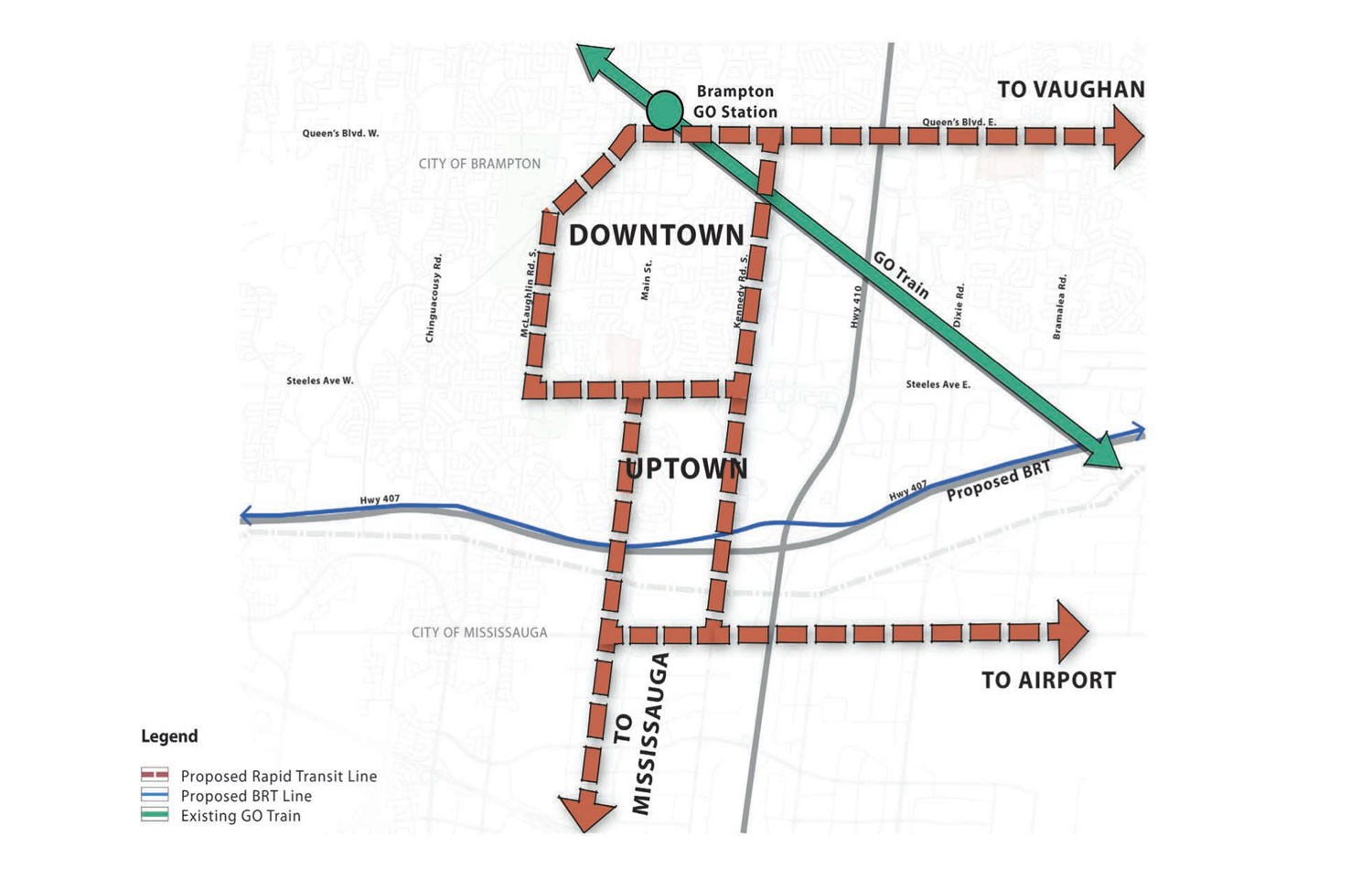
The Brampton 2040 Vision plan does not call for LRT on Main Street, instead suggesting a double-loop rapid transit design
The lack of council organization on the plan seems to be part of a larger pattern with a growing list of projects being overseen by a council that includes four members with no experience in municipal government (click here).
The delayed EA aside, the proposed routes which the city is studying pose numerous problems, including the cost of a tunnel option, all the flooding issues and the lack of growth potential along the Main Street corridor.
Transit consulting firm Steer Davies Gleave, which was previously paid $16 million by Brampton and Mississauga for part of the original Hurontario-Main LRT assessment, is unsure that the city could grow along the Main Street corridor, regardless of the alignment or loop. “The population within this character area is forecast to reach approximately 11,300 by 2031, an increase of approximately 1,500 persons from 2008 to 2031, or just under 3% of the total population growth forecast for the (entire Hurontario-Main LRT) corridor,” their report reads. “Between 2008 and 2031, employment growth within this character area is forecast to increase modestly by approximately 200 employees.”
The firm made it clear that higher order transit projects such as an LRT should be built along corridors where much higher residential and employment growth can occur, as these major transit investments are the most significant catalyst for density and urban development.
With demands for funding coming thick and fast from every municipality in the country, it remains unclear why the latest group of certain councillors, including Gurpreet Dhillon and Paul Vicente, who have advocated loudest for the Main Street surface option, is pushing a low-density corridor with little space to grow and serious concerns about the floodplain it would travel through.
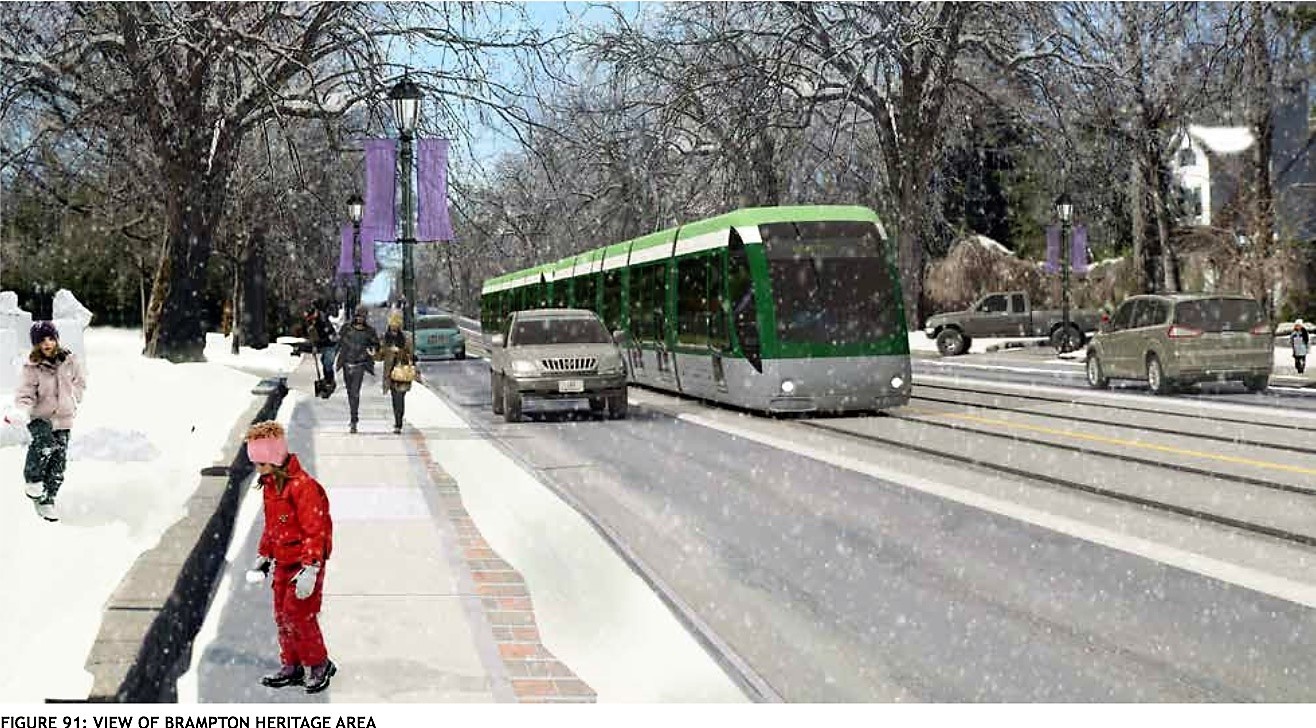
Rendering of the LRT on Main Street in the floodplain
One key issue with the Main Street route as a whole, and one which Brown alluded to, is its designation as a floodplain. The route, originally proposed by the province and rejected by council in 2015, then re-approved by current members after the provincial funding had been withdrawn, runs through an area prone to flooding from the Etobicoke Creek.
Speaking to The Pointer, Beth Williston, Associate Director, Infrastructure Planning and Permits at the Toronto and Region Conservation Authority (TRCA), said that there would be flooding concerns regardless of how the route might run along Main Street. “Whether the LRT is built as a tunnel or as a surface route, we will absolutely have flooding considerations that will need to be mitigated,” she said. Williston explained that the ongoing Riverwalk project in the city could help with flood mitigation and that the requirement for the LRT would be a contingency plan for emergencies. “Another mitigation method is simply working with Brampton’s emergency management and having protocols in place that, if this floods, there’s shutdown protocols in place for the LRT.”
“They [TRCA] do not block infrastructure development… I think the reason is that it is impossible to build a city and have the appropriate infrastructure in place for city building without having some flexibility,” Williston added. “As long as we’re providing for public safety in that flexibility, we’ll do the sign offs. If this area was to flood, the emergency management system would come into play. If it is to go underground, then we would make sure the portals or entrances and exit ways do not flood.”
As the EA and pre-TPAP process continues, the environmental body will be given a say and could have a significant impact on planning the project. With the project now led by the City of Brampton (the province was driving it prior to 2015 and is still in charge of the Hurontario portion), the TRCA can direct the city’s decision making, where Metrolinx and the province had decision making authority above the TRCA. It can make mandatory changes to the plan.
Even with the internal route assessment at such an early stage, experts have poured cold water on the idea of tunnelling the route along Main Street, floodplain or no floodplain. With its $1.7 billion price tag, the federal and provincial dollars which Brampton needs could be used on different projects across the city.
“It’s essentially two to three times more expensive to build underground,” Matthew Siemiatycki, a transportation infrastructure professor at the University of Toronto, told The Pointer. “This is money that could be used to extend the line further to connect more people, it could be used to buy more buses, it could be used to maintain existing infrastructure or to buy new types. There’s all sorts of places where [$]1.7 billion could be spent effectively. It’s not to say underground should never be in play, it’s just that it needs to be used in the right place at the right time.”
Siemiatycki, who teaches ‘Transportation Planning and Infrastructure: Concepts and Methods’, discussed some of the arguments for sending an LRT under the surface, explaining that most were not really a practical justification. The first and most common, he said, was to avoid traffic, something which an LRT can disturb, particularly if it is given a priority lane but in a non-designated design where the road is shared by trains and cars.
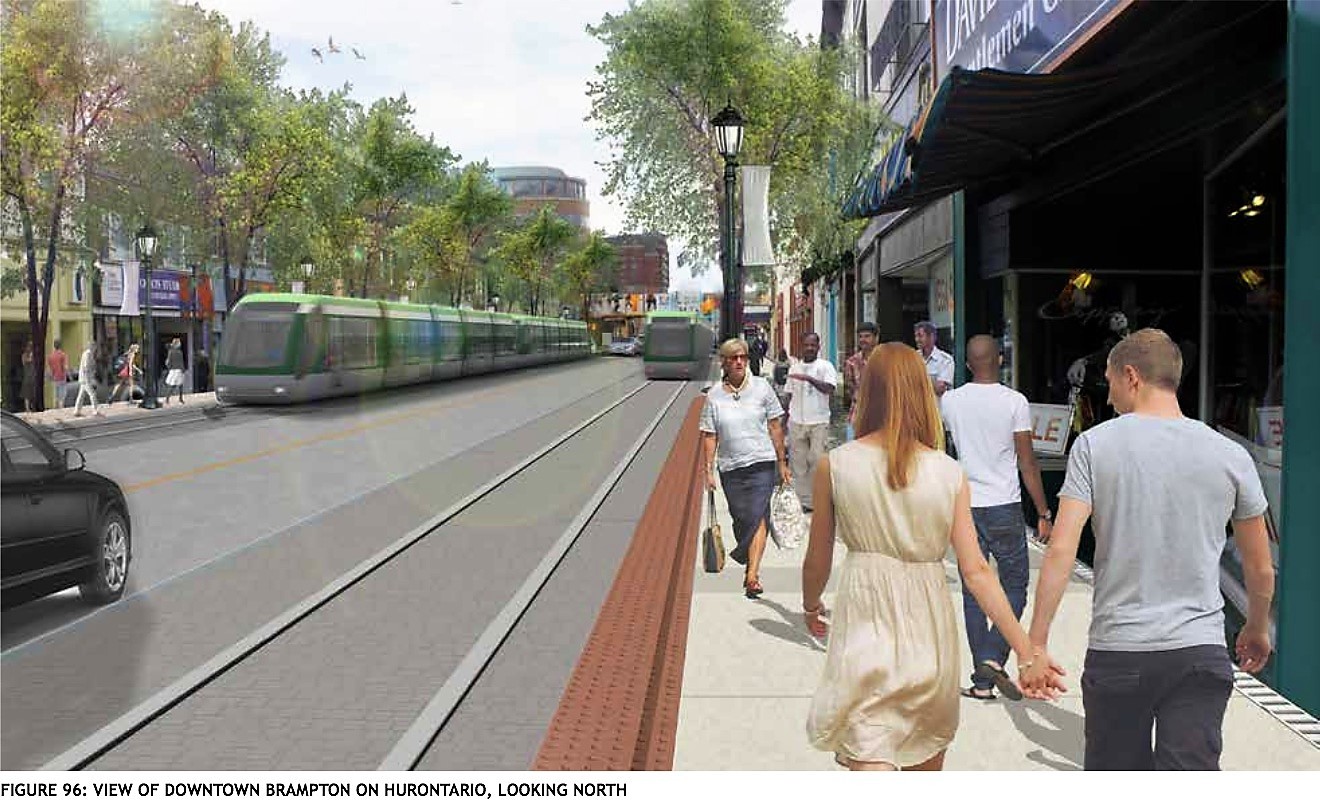
Main Street itself is one of many north/south routes in Brampton and, particularly in the downtown, not one of its busiest. Siemiatycki also said that “community disruption can be a concern,'' with underground seen as a less invasive form of building. However, the academic explained that stations must still be constructed, something normally done through a “cut-and-cover type of model” which would still cause disruption.
Heritage concerns are also a notable argument for tunnelling, though Siemiatycki pointed to the many cities in Europe, including Budapest, Prague and Zagreb, with light rail as evidence that cities with far greater and older heritage than Brampton have blended their transit systems into the background with no real problems.
Dhillon has publicly stated the heritage argument should not be used to justify sending the LRT underground, for so much more money.
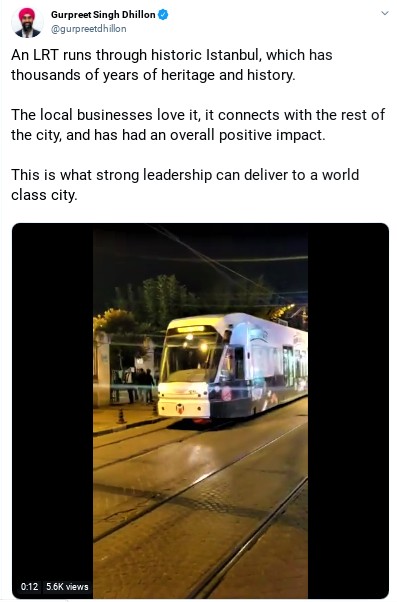
On paper, the biggest advantage of tunnelling an LRT is the speed and capacity it adds. Instead of waiting in traffic or at lights, trains can zip through tunnels, only stopping to pick up and drop off. That advantage, though, is lost if the train runs at surface level for the vast majority of the route, which is the case for the entire Hurontario stretch from the Mississauga lakeshore.
“Tunnels bring higher capacity, higher reliability, higher speed, but when you have a line that’s mostly running in the middle of the street anyway, travel time savings are minutes at most for a very expensive project,” Jonathan English, who is completing a PHD comparing Toronto region transit to that of Washington DC and San Francisco, told The Pointer.
English shares Siemiatycki’s disregard for the heritage argument, questioning the sense in spending close to $2 billion dollars to tunnel the route. Instead, he suggested using the additional funds for expansions to GO service, improved bus rapid transit in the city or even an extra above-ground rail. “When I say all this, finishing the project up to downtown and to the GO station is very important,” he added. “Having this light rail line which just ends at Steeles does not make a lot of sense, it’s very much an unfinished project.”
All of this leads to an unavoidable question: is council’s political decision making blinding it to other options? Is a desire to save face being put ahead of the transit investment and forward planning which the rapidly growing city needs?
As Steer Davies Gleave pointed out near the project’s inception, Main Street doesn’t make much sense. Its floodplain designation means extra emergency plans would need to be in place for an area with the potential to grow by just 1,500 residents and hardly any jobs for a major higher-order transit corridor. If the tunnelling option does indeed come in at the staff estimated $1.7 billion, that is an eye-watering per-resident cost for such little growth potential.
Brampton GO (where the proposed extension would terminate) is one of the city’s least useful regional transit stations.
The potential to integrate using the Bramalea station is much greater.
Line capacity issues between Bramalea and Kitchener, which Metrolinx is hoping to improve by 2024, mean that the station currently sits empty for hours at a time, with few able to take advantage of its connection to downtown Toronto or Waterloo. Even under the province’s planned improvements, just two trains per hour would run in each direction at rush hour, with one per hour during the day and one every two hours on weekends.
Bramalea could be considered for better transit integration, where electric trains straight into downtown Toronto in the future could offer service every 15 minutes. An east-west LRT along Queen Street, an option in the city’s 2040 Vision plan, could quickly connect the station with the city centre.
Part of the Queen Street study is looking at the need for higher order transit such as LRT
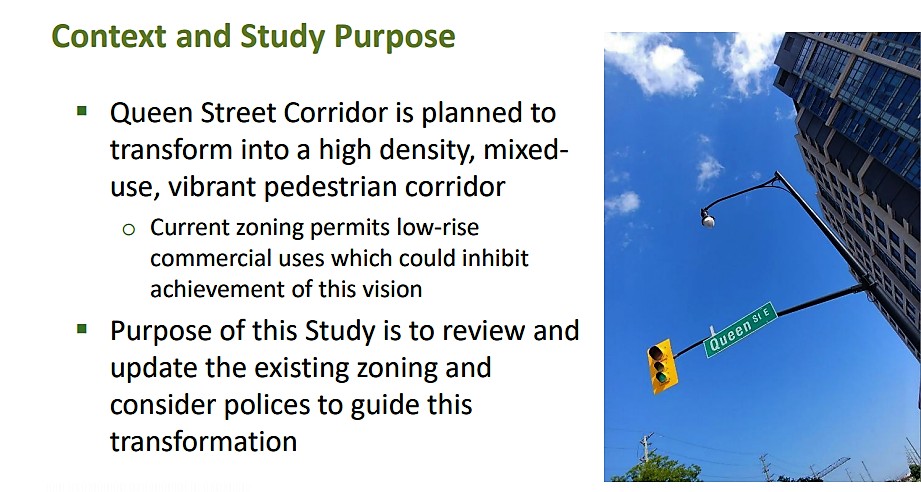
Pushing the Main Street route back onto the table immediately after the new council was sworn in last year, while scrapping all the staff work done for two years on the Kennedy Road and McLaughlin Road options (which council allocated $4.4 million for), was done with no consideration of the problems Main Street poses. It was supported by current councillors who are strong allies of former mayor Linda Jeffrey, who never clearly explained why she aggressively pushed the provincially approved Main Street alignment, while Steer Davies Gleave and many other Brampton leaders said it didn’t make much sense for the city.
But council is now bound by its decision to keep the LRT running down Main Street. It remains to be seen what obstacles this will pose or how long it will take to get the project ready.
Ultimately, the feasibility of the Main Street LRT is expected to be determined in the summer of 2021, and funding requests can’t be made till then, six years after council removed the option from the table.
Email: [email protected]
Twitter: @isaaccallan
Submit a correction about this story


